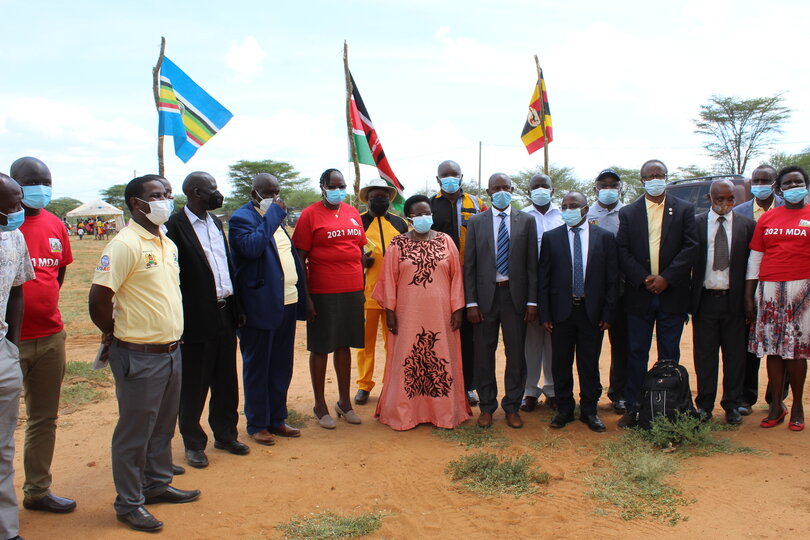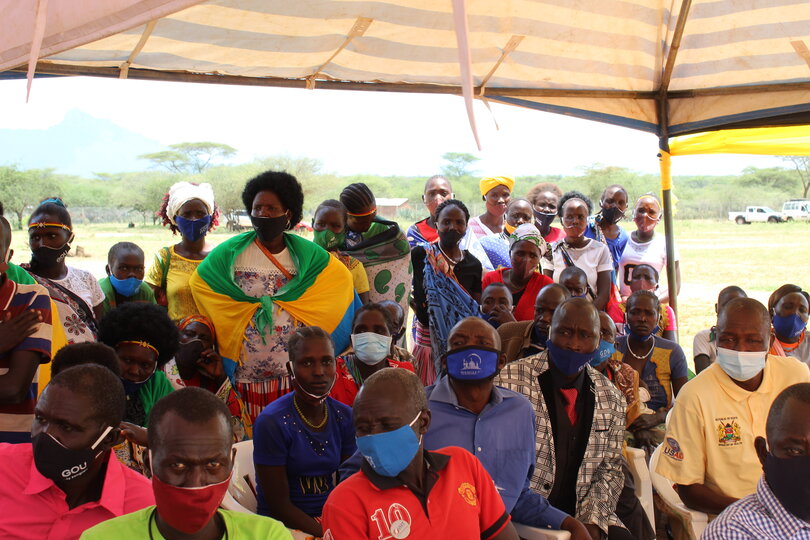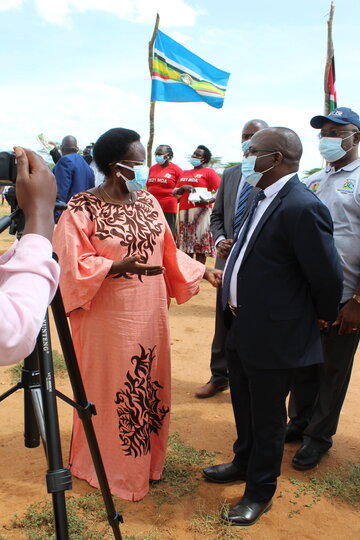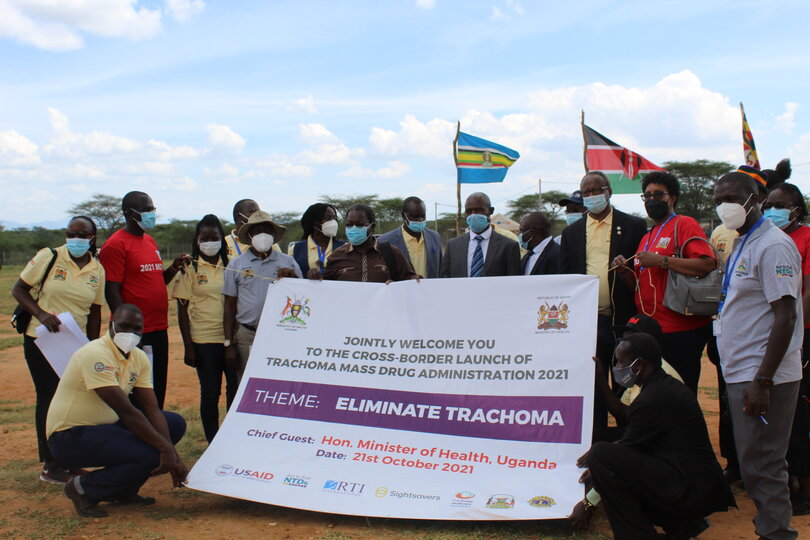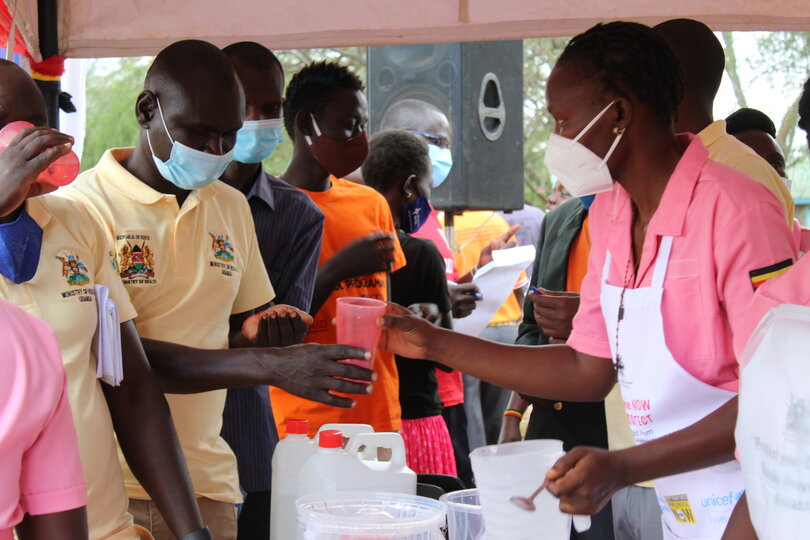Uganda and Kenya conduct first joint cross-border mass drug administration for trachoma

The Ministries of Health of Uganda and Kenya have launched their first cross-border mass drug administration (MDA) for trachoma, bringing the two countries another step closer to eliminating the disease.
Beginning on October 21, 2021, teams in key districts on both sides of the border began delivering medicines for trachoma, a neglected tropical disease (NTD) that affects the eye and causes severe pain and blindness if left untreated.
Kenya and Uganda have both used the SAFE strategy — surgery, antibiotics, face washing, and environmental improvements — to dramatically reduce the prevalence of trachoma in both countries. As a result, Uganda is on track to meet the World Health Organization goal for elimination by 2030 and Kenya is expected to do the same. But achieving elimination depends on reaching those who have not yet been reached by NTD program interventions, including nomadic pastoralist populations that regularly cross the border.
“This first-ever cross-border MDA between Kenya and Uganda represents the bold, inventive, and targeted action needed to achieve trachoma elimination, said Benjamin Binagwa, Chief of Party for USAID’s Act to End Neglected Tropical Diseases | East program in Uganda. “Congratulations to both Kenya and Uganda for your leadership in the fight against trachoma, for your commitment to reaching those who have not been reached, and for bringing the East Africa region one step closer to elimination.”

Synchronized treatment is one critical part of a wider cross-border trachoma strategy between the two countries, which includes sharing data on disease prevalence, mapping border hotspots, and discussing progress on the use of the SAFE strategy. Ugandan State Minister for Karamoja Affairs Dr. Maria Goretti Kitutu lauded this accomplishment, which will help to reach pastoralist communities that move across the border throughout the year. “I thank our Kenyan brothers for their efforts in working jointly with Uganda on trachoma elimination ranging from joint surgery, joint MDA and behaviour change communication,” said Dr. Kitutu.
Uganda’s Ministry of Health coordinates these cross-border efforts to eliminate trachoma, with support from USAID’s Act to End NTDs | East program, led by RTI International. To further help reach nomadic populations, Act | East is assisting outreach teams, supporting microplanning sessions to create targeted strategies in key areas, and building relationships with organizations that can help reach nomadic groups.
Kenya has also seen considerable success in the fight against trachoma. The cross-border efforts are led by Kenya’s Ministry of Health with support from The Fred Hollows Foundation, funded through the Sightsavers’ led Accelerate programme. “Trachoma is a painful and debilitating disease with no respect for political borders. Congratulations to Kenya and Uganda for coming together to eliminate trachoma in districts along the shared border,” said Michael Kirumba, Sightsavers’ Deputy Director for Accelerate. “No organisation can eliminate a neglected tropical disease alone. The Kenyan and Ugandan governments; donors; and other supporting organisations, have worked together through a leadership and cooperation model that other countries can adopt to help end this cruel disease.”
Since 2007, USAID has supported Uganda’s Ministry of Health to reach the country’s NTD control and elimination goals, with a focus on scaling up mass treatment and helping to strengthen Uganda’s health system to deliver NTD services. RTI International and The Carter Center have implemented USAID NTD programs in Uganda.
